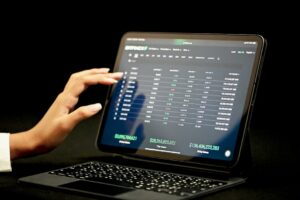The foreign exchange market, also known as forex, is the largest financial market in the world. With trillions of dollars traded daily, it offers countless opportunities for individuals to profit from currency fluctuations. However, getting started in forex trading can be overwhelming for beginners. That’s where forex classes come in. These educational courses provide the necessary knowledge and skills to navigate the forex market successfully. In this beginner’s guide to forex classes, we will explore what you need to know to get started.
Forex classes are designed to cater to individuals with varying levels of knowledge and experience. Whether you are a complete novice or have some basic understanding of forex, there is a class suited for you. The classes cover a wide range of topics, including fundamental analysis, technical analysis, risk management, and trading strategies. By enrolling in these classes, you gain access to expert knowledge and insights that can significantly improve your trading performance.
One of the first things you need to know about forex classes is that they are offered in different formats. Some classes are conducted in-person, usually in a classroom setting, while others are delivered online through webinars or pre-recorded videos. The choice of format depends on your preferences and availability. In-person classes offer the advantage of face-to-face interaction with instructors and fellow students, while online classes provide flexibility in terms of time and location.
When selecting a forex class, it’s essential to consider the reputation and credibility of the educational provider. Look for institutions or instructors with a solid track record in forex trading and teaching. Reading reviews and testimonials from past students can give you valuable insights into the quality of the course. Additionally, check if the course is accredited or certified by reputable organizations in the forex industry.
A comprehensive forex class should cover the basics of forex trading, including an introduction to the forex market and its participants. It should explain key concepts such as currency pairs, pips, lots, and leverage. Understanding these fundamentals is crucial to grasp the mechanics of trading and make informed decisions.
Technical analysis is another critical aspect covered in forex classes. This involves analyzing historical price data, charts, and indicators to predict future price movements. Technical analysis helps traders identify trends, support and resistance levels, and potential entry and exit points. Learning how to read charts and interpret technical indicators is essential for successful trading.
Fundamental analysis is another area covered in forex classes. This involves analyzing economic, political, and social factors that affect currency values. Fundamental analysis helps traders understand the underlying forces driving currency movements and make predictions based on economic indicators, news releases, and geopolitical events. It is a valuable tool for long-term traders and those interested in trading based on macroeconomic factors.
Risk management is a crucial component of forex classes. It teaches traders how to protect their capital and minimize losses. Understanding concepts like stop-loss orders, position sizing, and risk-reward ratios is essential for managing risk effectively. A good forex class should provide practical examples and exercises to help students apply risk management techniques in real-world trading scenarios.
Finally, forex classes should teach various trading strategies suitable for different market conditions. These strategies can range from simple techniques to more advanced approaches. Some common strategies taught in forex classes include trend following, breakout trading, and range trading. Students should have the opportunity to practice these strategies in simulated trading environments to gain hands-on experience.
In conclusion, forex classes are an excellent way for beginners to gain the knowledge and skills necessary to trade in the forex market. By enrolling in a reputable course, you can learn the basics of forex trading, technical and fundamental analysis, risk management, and various trading strategies. Remember to choose a course that suits your level of experience and preferred learning format. With dedication and continuous learning, forex classes can provide a solid foundation for your forex trading journey.






